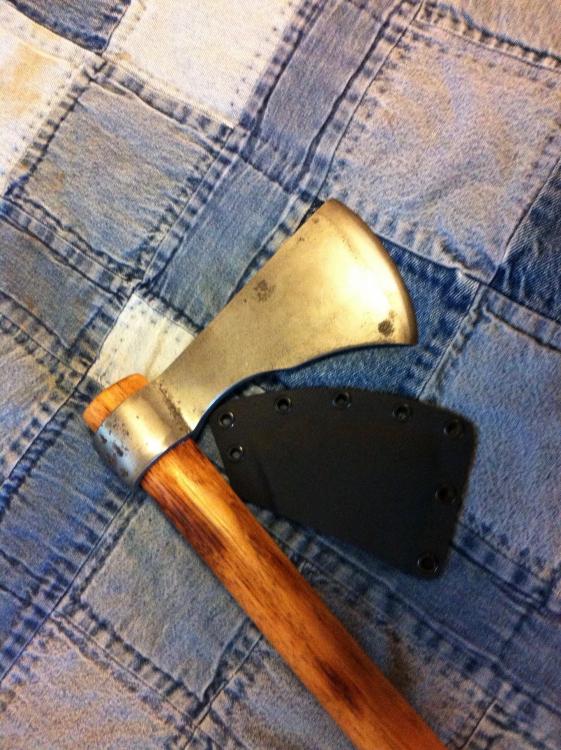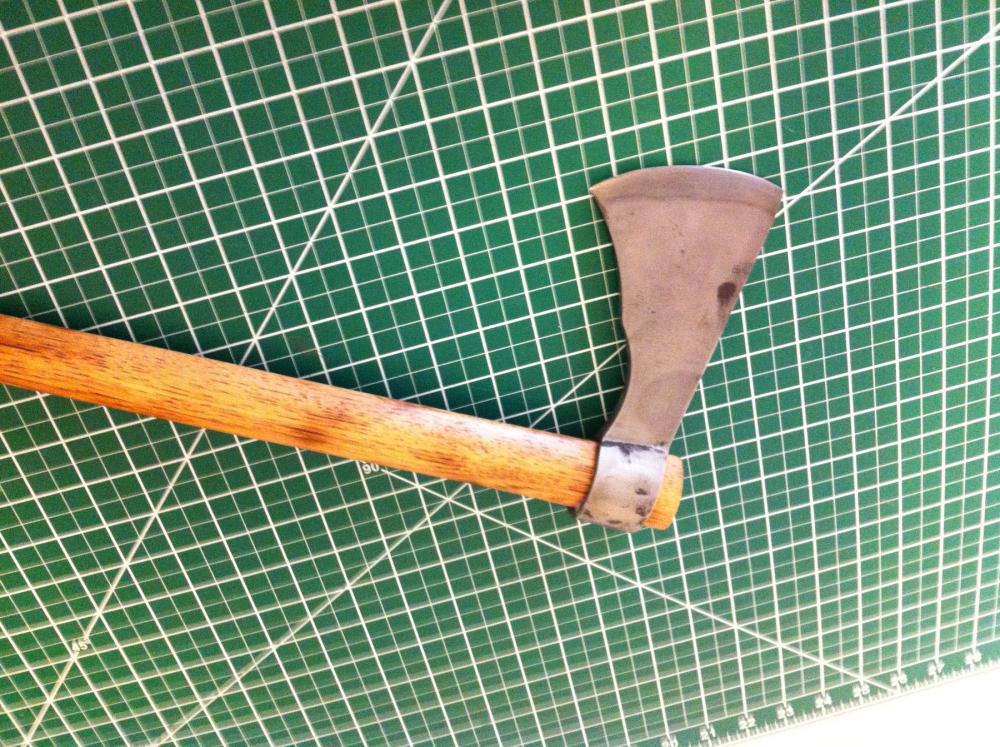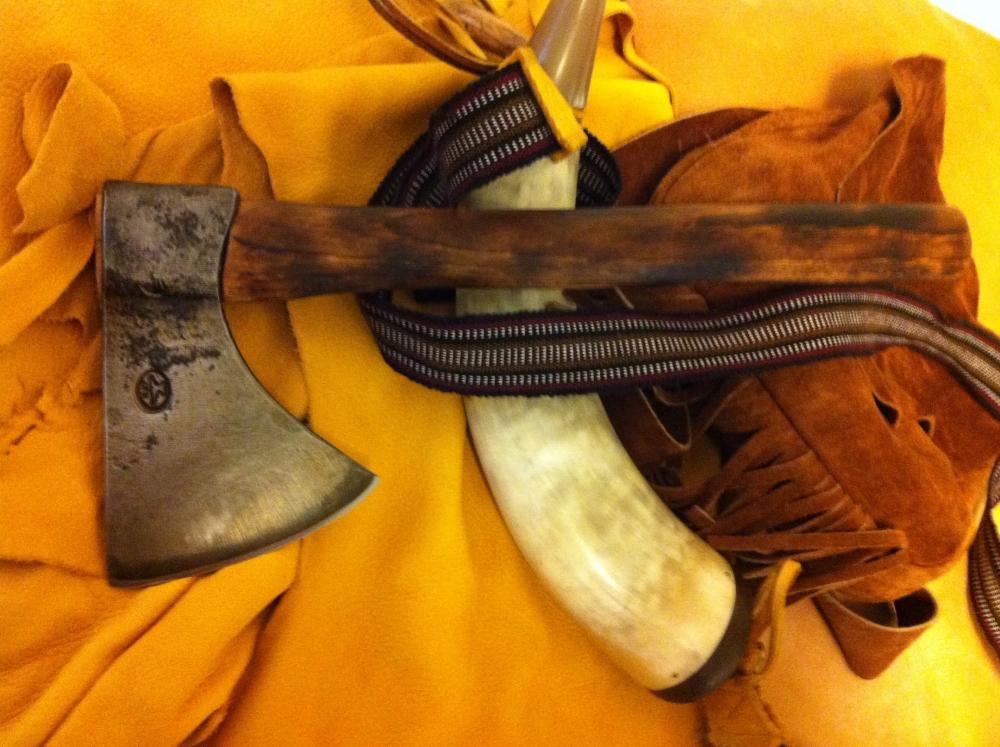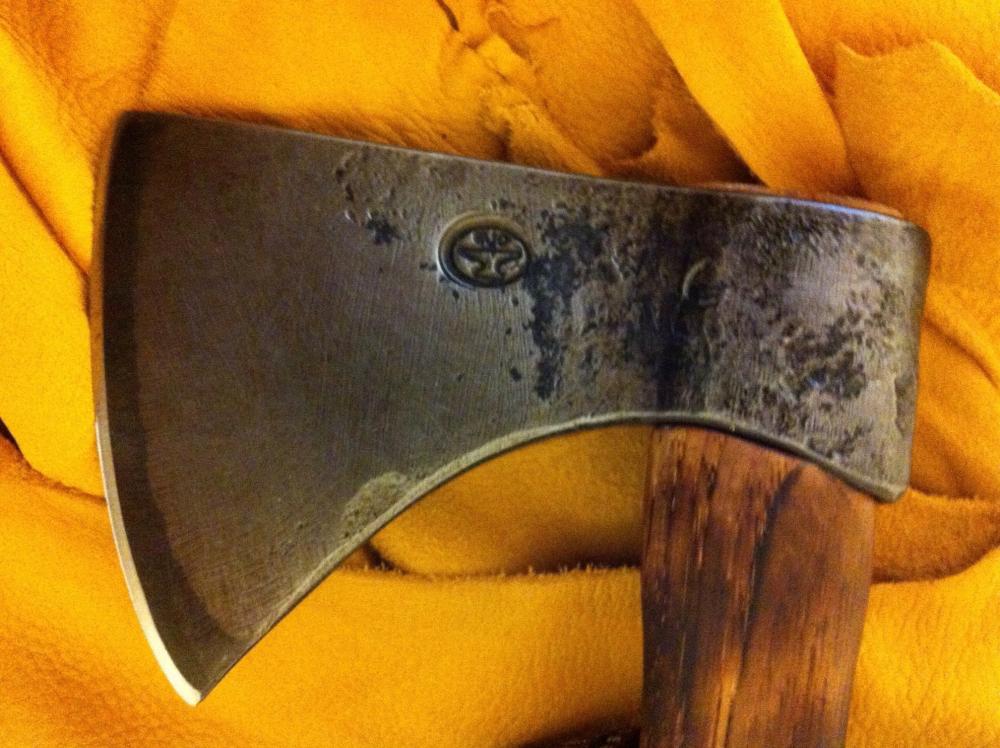
will52100
-
Posts
351 -
Joined
-
Last visited
Content Type
Profiles
Forums
Articles
Gallery
Downloads
Events
Posts posted by will52100
-
-
Beautiful work, I've just started shaving with a straight razor and have been wanting to make a few.
-
"it's the smith that matters" That is true to a point, but materials matter as well.
To me, first and foremost is the heat treat. The finest high performance steel in the world hammered out on a magic anvil with a poor heat treat can be beaten by a simple steel like 1095 with an exceptional heat treat.
Second is geometry, thin cuts better than thick, if your heat treat is good for the material your using, then you can go as thin as you can for the task. Don't put a super thin edge on a wood splitter, and don't put a thick edge on a slicer. I won't get into convex edge, hollow grind, etcetera, that's more to do with designed task than which is better. There is a fine balance between edge thickness and design and heat treat, I see a lot of knives with way too thick an edge.
Third is material. Once you've got the first two then the differences in material can make a very noticeable difference.
That said, there is little point in trying make a knife perform that is made from low carbon steel. Unless your maybe experimenting with carbonizing it or maybe experimenting with some form of magic super quench. But those activities are not best suited for beginners.
If you want to learn to make knives, best to leave the RR spikes alone, if your wanting to blacksmith and do decorative ironwork then RR spikes are a source of good quality cheap steel. Nothing wrong with playing with RR spikes, or even making knives from them, I just don't recommend using them to learn blade smithing on. That said, my next set of BBQ tools will be made from RR spikes, been wanting to try doing the bull's head.
-
You've got a good point that I hadn't considered. I started out with high carbon and knives and moved a little into decorative ironwork. The difference between something like 52100 and mild steel forging is very large to say the least. Mild steel moves like clay compared to some of the higher alloy knife steels.
-
JHCC, what I meant by that was that you'd be just as well or better off using a bar of mild or wrought iron as your base for the knife.
-
You can make a knife from a RR spike, and you can play tricks with super quench or water or whatever to give it a marginal edge. Will it make a good knife? No. Most people I see buying RR spike knives do it for letter openers and the novelty of it. Will it skin a deer? Yes, but then so would a hammered out brass shell casing. RR spikes can be fun to play with, but the simple fact is they lack enough carbon to make a decent knife. I have seen some that had a high carbon or damascus edge welded on and have been wanting to try that myself but haven't had time. I have even seen some high carbon damascus RR spikes made and then forged into knives.
I didn't see the video, but I did see an article from Wayne Goddard about a student passing the free hanging rope test with a dead soft mild steel blade, it folded over in the 2x4 test. The free hanging rope test is more about sharpness, geometry and speed of swing than steel or hardness. I've seen dull to the touch European swords cut mats with a single swing. As for the chop test, would like to examine the edge before and after chopping with a radio shack hand held microscope, think it's something like 30 power?
There are a lot of things you can do with RR spikes, making a decent knife is not one of them. Even if you add a high carbon edge your still left with an overly heavy handle and poor balance, and is a novelty item would hold a decent edge. If you forge the head and tang out and add a traditional handle, then what's the point?
-
Never dealt with them, but from there web page it looks like there on the soft side, but the price is very attractive if its new or near new condition. I worked for many years on a soft anvil and while not as much fun as a hard one, it'll get the job done.
-
I don't use much liquid nitrogen, primarily for the little bit of stainless I do. I used to take a metal thermos with the cap seal removed so it could vent, and placed in a 5 gallon bucket wrapped with towels. It used to cost me like 4$ to fill and it'd last a couple of days with blades in it. Unfortunately Airgas bought out the welding supply where I got it and there a bunch of arrogant jerks and I refuse to do business with them. They and most other suppliers refuse to fill anything but a LN dewar. I've got an old one, my father used to AI when he was dairying, it's vacuum has leaked out, but it'll still hold LN for about 30 days, it was a 60 day tank. Of course that's just sitting, the more you open and put room temp blades in the faster it evaporates. I've looked at getting a smaller tank with a large mouth, but the prices are insane.
A safety note, don't transport LN or dry ice in an inclosed vehicle, put it in the back of a truck, as it evaporates it displaces oxygen and can suffocate you. A wreck with LN can also be a very bad thing, there was a driver that filled tanks at different farms and had a wreck, he was a popsicle.
-
Great video, seen it before but had to watch it again, glad it was recorded. Would love to have one of those pieces of history.
-
Cool, looks like it'd get the job done.
-
Thanks, the wrought iron was an experiment, it came from an old wagon wheel, about 10" wide, 1/4" thick that had been used for a brick ledge on a fireplace, found it when we tore the old house down. House was built around 1901, and the iron was fairly corse. I basically forged it flat and cut and stacked it, think it was 6 layers, a triple fold, then cut down the middle and triple folded again. It came out pretty clean, but I didn't etch very long, just enough to give a little age and grey to it. Also, I didn't finish it finer than a 120 grit belt, a finer finish and a longer etch would bring out the grain better. Stamp is a little too deep, should have hit it once, not twice with the big hammer, wrought iron is soft at heat.
-
Well, large hawk and small trade belt axe
Hawk has a 3 1/2" cutting edge, 19" hickory handle, body of 1018 with a 1084 bit. It's left a bit rougher than I normally do hawks so I did a kydex blade guard figuring it be a good one to throw in a truck or side by side tool box.
Belt axe as a 3 3/4" cutting edge, 14" hickory handle, body of wrought iron with a 5160 bit. I left this fairly rough as well, it's my take on a trade axe or hatchet. Also first time using my new stamp, just an anvil with my initials, WJC. I normally use an electro etch and stencil, but that don't work too good on rough forge finished metal.
-
I understand that, but this is not open bearings, and I have been greasing before every day of running, new grease pushes old crud out, same as on a disk or bush hog. The old oil holes were just that, holes leading directly into the bushing. We'll se how it goes, so far I'm liking it.
-
Finally got time to get everything back together and give it a good work out. I put grease fittings in all the linkages, except for the ram guid, that still gets silicon spray. Man what a difference, I'm thinking the lead had been loose for a while and just finally worked it's way to the top where it was hitting the link pins.
-
That's what I'm thinking, I wonder why they didn't add grease fitting when they built the hammer? They took the time to press in bronze bushings and drill oil holes, grease fittings would not have taken but a few minutes longer.
-
I haven't had a chance to get it back together yet, had to go pick a few set screws up for the head cross pins, it'd slung all but one out, there what keeps the pins in head from moving to the side and hitting the ram guid.
Anyway, got to thinking, the toggles only have oil holes and I've been using silicon spray on everything but the upper pillow block bearing on the pitman arm. Would now be a good time to add grease certs to the bushings? There is a little slack in the bushings, but not bad. I'm thinking a good quality grease would cushion as well as lubricate the toggle arms.
Thoughts?
-
I put a 1/8" sheet metal cover over it and welded it down. Even if it breaks free, it can't go anywhere, it might batter itself to the point it could wiggle an 1/8" up and down.
-
Got it fixed, now just for it to cool down and get it back together.
The lead was sliding up and impacting the toggle arms. It would not come all the way out and I decided to quit over engineering it and just heated it up on the turkey frier. Then had to stop and drill out the die bolt holes and run bolts in and tighten as lead was leaking out around the loose bolts. Drilled out the lead and chased the threads with a tap and tightened bolts and washers in place and re heated till liquid. Once it solidified I cut a 1/8" piece of sheet metal and welded it on top of the lead. I figure even if it comes loose it isn't going anywhere now.
Hopefully will get everything back together and up and running in the morning.
-
Would the brass help bond it better than clean steel? Looks like I'm going to have to do it sooner rather than later, was using it just a little while ago and felt and heard it "lump" a couple of times. Not looking forward to it for sure.
-
Just kinda surprising is all. If I'm understanding you correctly you leave the flat bar in there?
Kind of a PITA, but I'll most likely take it apart and clean and melt the lead out, then clean and heat the head and pour lead back in. With or without a cross member the secrete to getting a good bond is clean metal and getting the head up to heat. And alloyed lead with a bit of tin in it melts at lower temps than pure lead. Still think if I have to go that rout I'll add a cross member or two as well.
That is if I have to do it, may just be a little puddled lead that is breaking loose, we'll see. Hopefully if not then it will wait till winter, it's too bloody hot right now to screw with.
-
Really? That seems, I don't know, kinda red neck and I'm a red neck. I think if it comes loose I'll take it down and re-melt with maybe a cross piece to lock everything in place.
-
Been running my tire hammer for several years and it's been great. However, in the last couple of days it's spit a couple chunks of lead out of the hammer, probably around 500 grains to 1000 grains each. It's easier for me to picture a couple cast bullets than try and figure out the grams or tenths of pounds.
So far it seems the lead is holding OK, no rattle or doesn't seem to be loose, but I'm wondering if I'll be fixing it in the not to distant future? I didn't build this hammer, it was built at one of Clay's work shops several years before I bought it. I did have to go over several of the welds and fix them shortly after bringing it home. I'm wondering if maybe they didn't pre-heat the head before pouring the lead in. If I have to repair it I have a turkey fryer that I use to smelt scrap lead into ingots, so it's not that big an issue to melt it out. I'm thinking that if I do have to do that I will sand blast the inside and weld in a rebar cross member to lock it in place when I re cast it.
Or is it a non issue and I'm worrying over nothing? Too full of silicon and grease to get a good look in the head, may just be a little extra that flaked off. I plan to run it till I start seeing the lead get loose.
-
Impressive, not a huge fan of integral hawks, but that is the exception.
-
Cool, those came out great.
-
Very nice work, love it.




Scroll bender plans?
in Tools, general discussion
Posted
Anybody got plans for something like this? I'm pretty sure I can figure it out, but it'd be a huge time saver to have drawings to go by.
Thanks